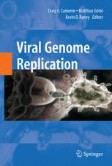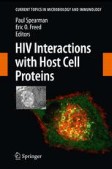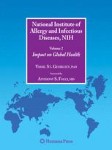Search
Search Results
-
Six host range variants of the xenotropic/polytropic gammaretroviruses define determinants for entry in the XPR1 cell surface receptor
BackgroundThe evolutionary interactions between retroviruses and their receptors result in adaptive selection of restriction variants that can allow...

-
Overview of Retrovirology
In the 100 years since their discovery, retroviruses have played a special role in virology and in molecular biology. These agents have been at the...
-
Generation of human TRIM5α mutants with high HIV-1 restriction activity
Rhesus macaque tripartite motif (TRIM)5α potently inhibits early stages of human immunodeficiency virus (HIV)-1 replication, while the human...

-
The evolution and diversity of TNF block haplotypes in European, Asian and Australian Aboriginal populations
The region spanning the tumour necrosis factor (TNF) cluster in the human major histocompatibility complex is implicated in susceptibility to...

-
Host Factors that Restrict Retrovirus Replication
Over the past several decades, it has become clear that a variety of cellular proteins actively restrict retrovirus replication. Two families of...
-
TRIM5alpha
TRIM5α protein blocks retroviral replication at early postentry stage reducing the accumulation of reverse transcriptase products. TRIM5α proteins of...
-
Molecular evolution of mobile elements of the gypsy group: A homolog of the gag gene in Drosophila
Retrotransposons of the gypsy group of Drosophila melanogaster that are structurally similar to retroviruses of vertebrates occupy an important place...
-
OVEX1, a novel chicken endogenous retrovirus with sex-specific and left-right asymmetrical expression in gonads
BackgroundIn chickens, as in most birds, female gonad morphogenesis is asymmetrical. Gonads appear first rather similarly, but only the left one...

-
Molecular evolution of the antiretroviral TRIM5 gene
In 2004, the first report of TRIM5α as a cellular antiretroviral factor triggered intense interest among virologists, particularly because some...

-
Multi-stage Friend murine erythroleukemia: molecular insights into oncogenic cooperation
The Friend virus SFFV (Spleen Focus Forming Virus) provokes an acute erythroblastosis in susceptible strains of mice that progresses to overt...

-
Introduction
For nearly three decades, the human immunodeficiency virus (HIV) and the acquired immunodeficiency syndrome (AIDS) pandemic has claimed the lives of...
-
Implication of TRIMalpha and TRIMCyp in interferon-induced anti-retroviral restriction activities
BackgroundTRIM5α is a restriction factor that interferes with retroviral infections in a species-specific manner in primate cells. Although TRIM5α is...

-
TRIM family proteins and their emerging roles in innate immunity
The superfamily of tripartite motif-containing (TRIM) proteins is conserved throughout the metazoan kingdom and has expanded rapidly during...

-
Expression of infectious murine leukemia viruses by RAW264.7 cells, a potential complication for studies with a widely used mouse macrophage cell line
The mouse macrophage-like cell line RAW264.7, the most commonly used mouse macrophage cell line in medical research, was originally reported to be...

-
Both TRIM5α and TRIMCyp have only weak antiviral activity in canine D17 cells
BackgroundTRIM5α, which is expressed in most primates and the related TRIMCyp, which has been found in one of the New World monkey species, are...

-

-

-

-
Evaluation of the intra- and inter-specific genetic variability of Plasmodium lactate dehydrogenase
BackgroundMalaria diagnosis is vital to efficient control programmes and the recent advent of malaria rapid diagnostic tests (RDTs) provides a...

-
HIV infection of non-dividing cells: a divisive problem
Understanding how lentiviruses can infect terminally differentiated, non-dividing cells has proven a very complex and controversial problem. It is,...

